Principle behind the water hammer phenomenon in condensate pipes
The water hammer phenomenon in condensate pipes often arises from the interaction between low-temperature condensate and high-temperature steam. This usually occurs when condensate and flash steam coexist in the same pipe. Notably, this phenomenon occurs at junctions with significant pressure differences between various condensate pipes or near points where condensate pipes and flash steam lines intersect. At these points, high-pressure flash steam flows into the low-pressure condensate pipe, resulting in water hammer.
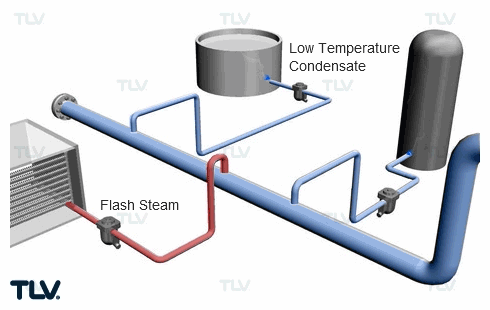
Resolving this issue is complex since the purpose of the pipe is to transport condensate, so removing it is not an option. Therefore, there is no direct approach to prevent this phenomenon, only methods to mitigate its impact.
Causes and Mitigation Measures for Water Hammer in Condensate Pipes
Chugging Noise
This occurs when high-temperature flash steam interacts with low-temperature condensate. In scenarios without large air pockets, the steam quickly condenses and generates a fast cyclical impact known as “chugging.” This name originates from the emitted noise, similar to a “chug-chug” engine sound. Although the force isn’t substantial, the noise can become problematic.
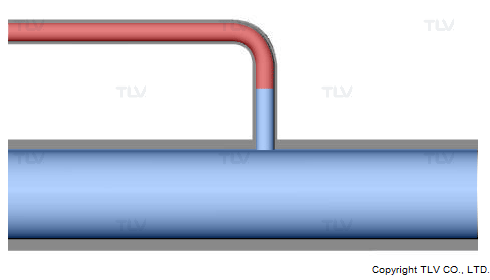
→ Remedies:
- Create small holes to dampen the noise
- Install sound dampeners

Reverse Flow
Water hammer due to reverse flow often appears in industrial plants, caused by backflow of low-temperature condensate in condensate pipes. It can stem from reverse flow of steam either from condensate pipes or from flash steam tanks.

Water hammer caused by reverse flow from condensate pipes
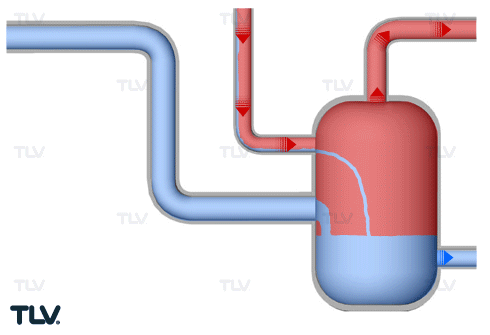
Water hammer caused by reverse flow from flash steam tanks
To prevent this, one option is to install check valves. However, the effectiveness of this measure may be limited if the valve is incorrectly positioned or if the wrong type of valve is used.
Formation of Large Air Pockets
The most common type of water hammer in condensate pipes stems from the formation of large air pockets. It usually occurs at points where high-temperature steam pipes intersect with low-temperature condensate pipes. Unlike reverse flow-induced water hammer, the cause here isn’t the reverse flow of steam and condensate, but the formation of large air pockets.
Like other types of water hammer, the impact of this phenomenon may manifest far from its origin, complicating cause identification.
Some spots where water hammer often occurs due to improper seams
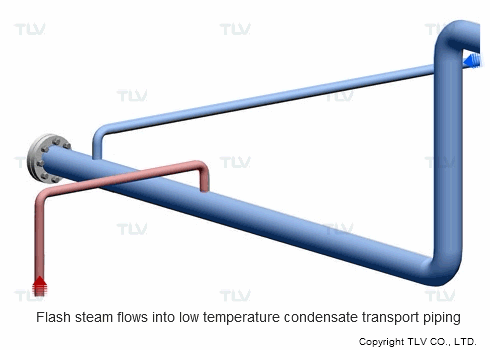
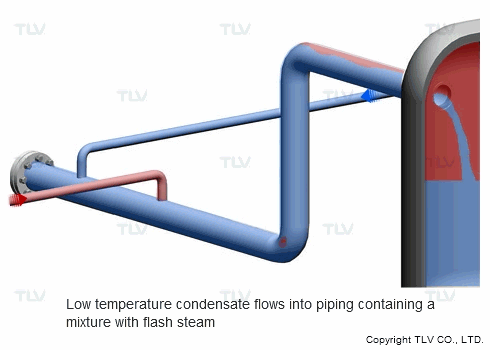
Remedy
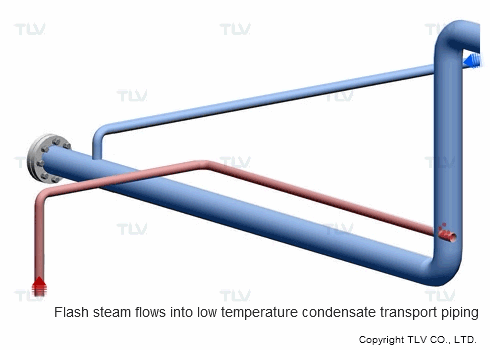
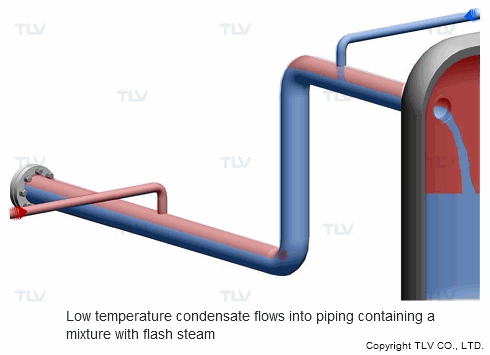
Addressing this issue is far from straightforward. First, the temperature differences between the condensate and the pipe must be measured, and then appropriate solutions applied. For instance, one might connect the pipe to a vertical section to prevent the formation of air pockets.
Generally, there are three critical factors when dealing with water hammer:
- Maintain small air pocket sizes.
- Prevent the formation of steam (or flash steam), the direct cause of the issue, or redirect it to a different branch of the system.
- If possible, avoid connecting high-temperature steam pipes with low-temperature condensate pipes.
Note that when water hammer occurs in condensate pipes, sometimes the pipes themselves may be the cause. This makes predicting the occurrence and location of water hammer challenging. Therefore, remedial measures are often only considered after the problem has occurred. If the cause is due to equipment situated far away or seasonal factors, a comprehensive and long-term study may be required.

 Tiếng Việt
Tiếng Việt




